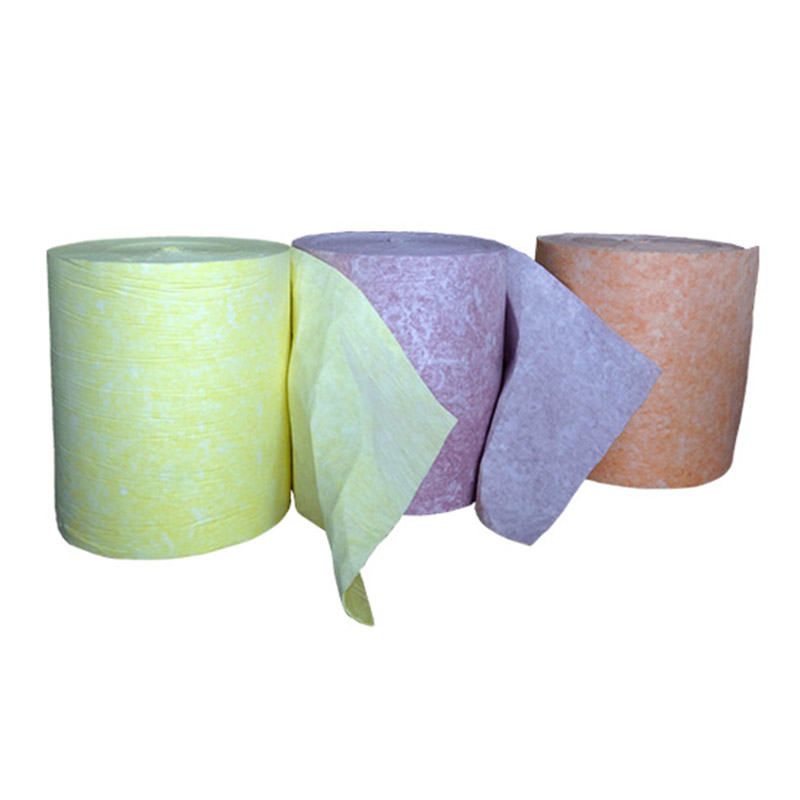Fiberglass air filter media is a widely used filtration material designed to capture and hold airborne particles, contributing to cleaner and healthier environments across residential, commercial, and industrial applications. Known for its high dust-holding capacity, temperature resistance, and low resistance to airflow, fiberglass filter media has become a trusted solution in HVAC systems, paint booths, cleanrooms, and other air quality-sensitive areas.

Understanding Fiberglass Air Filter Media
Fiberglass filter media is made from extremely fine glass fibers that are woven or layered into a mat-like structure. These fibers are often arranged in a progressively dense pattern, allowing the filter to trap both large and small particles efficiently. The density of the material can vary depending on the application, from coarse filtration of large debris to finer filtration of smaller dust particles.
This media is often supplied in rolls, pads, or integrated into a fiberglass filter media air filter, which is typically housed in cardboard or metal frames for ease of installation. The filters come in different thicknesses and colors (such as blue-white or yellow-white) that often indicate their specific filtration capacity and intended application.
How Does Fiberglass Media Filter Air?
A fiberglass media filter operates on a principle called mechanical filtration. As air passes through the layers of glass fibers, particulate matter such as dust, pollen, mold spores, and other airborne contaminants are physically blocked and captured within the depth of the media. The structure of fiberglass allows for a "depth-loading" effect—larger particles are caught in the outer layers, while smaller particles are gradually trapped deeper within the media.
This multi-layer design contributes to a higher dust-holding capacity, which means the filter can trap more contaminants before needing replacement. It also helps maintain a relatively low airflow resistance, ensuring HVAC systems can run efficiently without being overburdened.
Key Benefits of Fiberglass Air Filter Media
High Dust Holding Capacity
The deep fiber construction enables efficient loading of dust and particles, extending the service life of the filter.Low Initial Resistance
Fiberglass allows air to flow freely, reducing energy consumption and improving system performance.Temperature and Moisture Resistance
Fiberglass is non-combustible and resistant to humidity, making it suitable for use in high-temperature or moist environments.Versatile and Cost-Effective
Whether used in pre-filters, final filters, or custom HVAC systems, fiberglass air filter media offers a cost-effective option for general-purpose air filtration.Customizable for Various Applications
Available in different sizes, grades, and densities, fiberglass media can be tailored to specific air quality requirements.
Common Applications of Fiberglass Filter Media
HVAC Systems in commercial and residential buildings
Spray Paint Booths for capturing overspray and particles
Industrial Ventilation Systems
Cleanrooms and laboratories for particulate control
Pre-filters in multi-stage air filtration systems
These applications rely on the consistent performance and affordability of fiberglass materials, especially when high airflow rates and large volumes of dust are involved.
Considerations When Choosing Fiberglass Air Filters
When selecting a fiberglass media filter, several factors should be considered:
Filtration Efficiency: Check the MERV rating or EU classification to match your air quality goals.
Media Thickness and Density: Thicker media usually means better filtration but may slightly increase airflow resistance.
Environmental Conditions: Choose media rated for high humidity or heat if used in demanding environments.
Replacement Cycle: Depending on the dust load and application, fiberglass filters typically require regular replacement every 30–90 days.
Conclusion
In summary, fiberglass air filter media is a proven and effective solution for capturing airborne particles in a variety of settings. Its mechanical filtration design, combined with durable construction and cost-efficiency, makes it a popular choice for air quality management across industries. Whether you're sourcing rolls for OEM applications or using a ready-to-install fiberglass filter media air filter, you can trust fiberglass to deliver reliable performance and cleaner air.
As industries continue to prioritize indoor air quality and energy efficiency, the demand for advanced fiberglass media filters remains strong, supporting environments where cleanliness and safety are essential.





